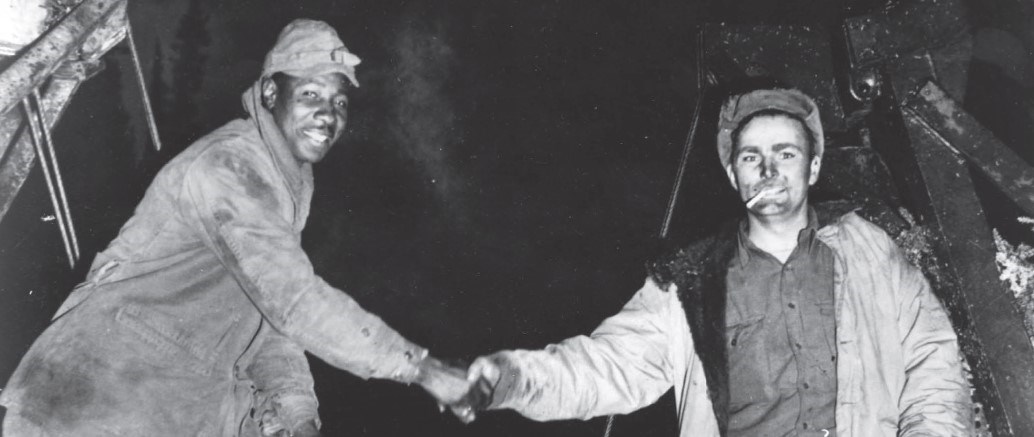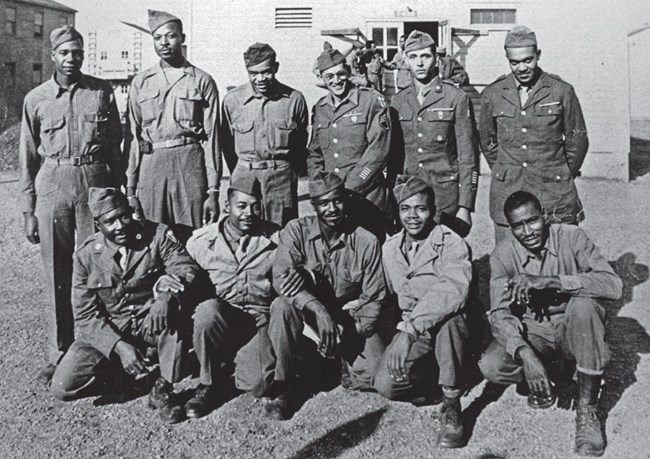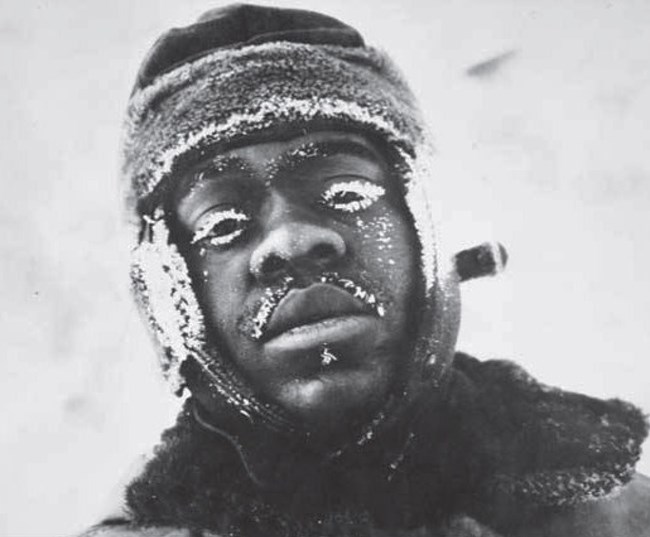Last updated: February 18, 2025
Article
Black History in the Last Frontier: Alaska Highway Engineers

Photo courtesy U.S. Corps of Engineers History Office

and Canada.
Lael Morgan Collection, Rasmuson Library, University of Alaska
Fairbanks (UAF-2012-0071-00308)
Providing Much-Needed Manpower
Construction of the highway was scheduled for March 1942. The Army set out to construct an operable road within a year, a feat few thought possible. At the start of the project, four white regiments of the Army Corps of Engineers, the 18th, 35th, 340th, and 341st, were sent to Alaska to clear the boreal forests that spanned roughly 1,700 miles from Dawson Creek, British Columbia to Delta Junction in Alaska. Construction faced delays due to spring snow and then a series of floods in early June. But after the Japanese attacked Dutch Harbor in June of 1942, invading the Aleutian Islands of Attu on June 6 and Kiska on June 7, pressure ramped up to complete the project. The need for additional manpower was obvious. Until this point, black regiments in the segregated military served in subordinate positions to their white counterparts, under the belief that they could not be trusted under fire, in combat, or even to work heavy machinery. But by mid-June, the demand for additional workers was so high that the military reversed some of its discriminatory policies to allow black troops to participate in the construction effort. Within weeks, the 93rd, 95th, and 97th regiments, as well as the 388th battalion, deployed to Alaska and Canada to complete the highway.
Fred B. Dodge Collection, 1943, ASL-PCA-42.
Harsh Conditions, Especially for Black Soldiers from the Deep South
The troops encountered strenuous conditions, including unreliable supplies of food and necessities, and frequent equipment failures. The heavy construction vehicles had to be transported overland for hundreds of miles in freezing temperatures, and the ice and mud often resulted in broken axles of immovable trucks. The winter of 1942 brought cold snaps of forty and fifty degrees below zero for days at a time. In the summer, workers faced swarms of mosquitoes and temperatures around ninety degrees.Proving Their Worth with Picks and Shovels
Though conditions were harsh for all, they were nearly unbearable for black soldiers. From the Deep South, most of these soldiers had never encountered anything approaching the severe conditions of the far north. Moreover, since black troops were not typically permitted to use heavy machinery, they made do with picks, shovels, and axes. In addition, they were prohibited from entering towns and were confined to wilderness assignments.Still, the black regiments built northward from Dawson Creek, while the white regiments built southward from Fairbanks. By the time the two sections met, the black soldiers had completed a longer stretch of the road than their white counterparts, despite their lack of power tools and machinery. The soldiers worked day and night, without recreation or relief.
Despite these brutal conditions, the project provided black soldiers with a singular opportunity; not only was the building of the Alcan unique in stationing black soldiers beyond stateside jobs, it also provided a means for them to learn new skills and highlight their indispensability to the war effort. Due to the exhausting work performed by these soldiers, the Alcan was completed by the end of November 1942, just over eight months. Though the road was rough, it nevertheless served the military’s needs, and the ten thousand soldiers remained over the next year to make improvements.
